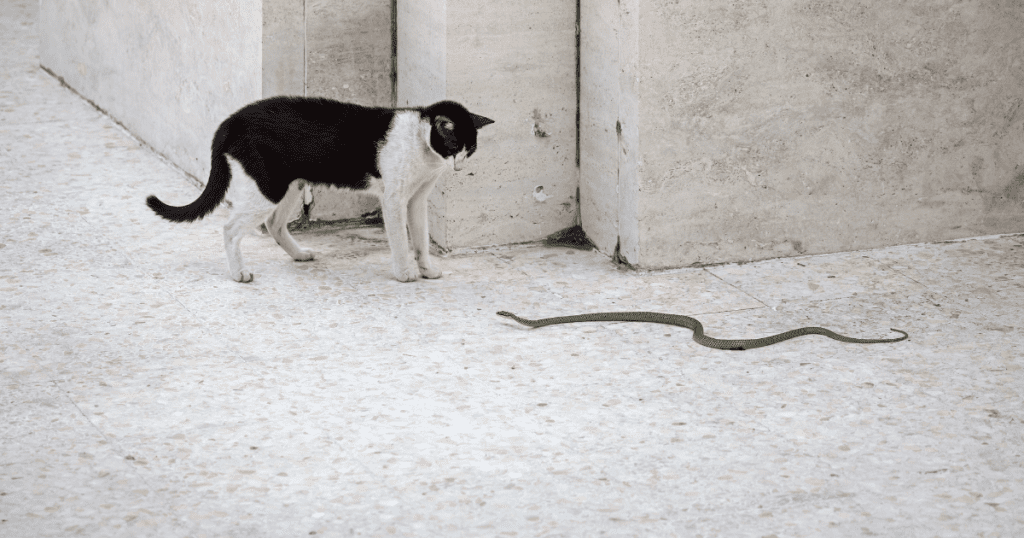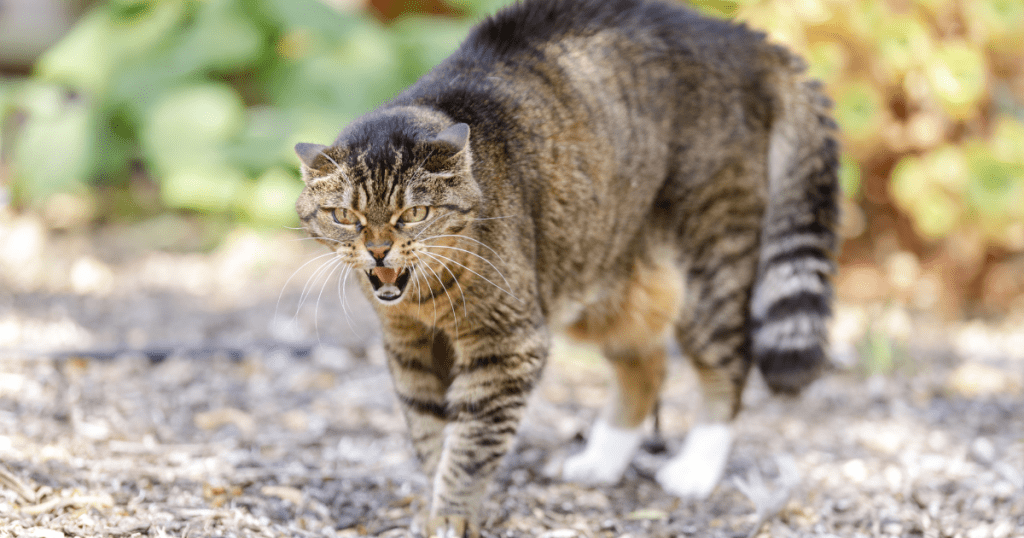Have you ever been around a cat that suddenly hissed, leaving you puzzled and perhaps a bit startled? The hissing sound, often accompanied by an arched back and puffed-up fur, is a behavior that has fascinated pet owners, animal behaviorists, and scientists alike. In this blog post, we’ll delve into the intriguing science behind why cats hiss and how this behavior evolved.
The hissing sound is not just a random noise; it’s a complex form of communication that has evolved over time. Stick around as we explore the evolutionary roots, the psychology, and even the mechanics of this curious feline behavior. You’ll gain a deeper understanding of your feline friend and perhaps even grow to appreciate the hiss as more than just a startling sound.
Cats learned to hiss as an evolutionary adaptation for survival. The hissing sound mimics that of a snake, a natural predator, to deter threats. This behavior is instinctual and can be observed even in kittens who have had limited social exposure.
But there’s more to the story! We’ll also discuss the psychology of cats, the mechanics of hissing, and the role of domestication in shaping this behavior. So, let’s dive in!
How Did Cats Learn How to Hiss?
The ability for cats to hiss is a fascinating blend of evolution, instinct, and survival tactics. While the exact origins are hard to pinpoint, it’s widely accepted among scientists that this behavior evolved as a survival mechanism. The hissing sound closely mimics that of a snake, a creature that many potential predators would prefer to avoid. By mimicking this sound, cats can often deter threats without having to engage in physical combat.
This behavior is so deeply ingrained that even kittens who have had limited exposure to other animals or threatening situations will often hiss instinctively. This suggests that the ability to hiss is not learned behavior but rather an instinctual one. It’s a built-in feature, so to speak, designed by nature to increase the cat’s chances of survival.

The hissing behavior has been observed in various feline species, not just domestic cats. From the African serval to the bobcat, this form of communication appears to be universal among felines. It serves as a compelling example of how evolution shapes behavior for survival, even in our domesticated pets.
The Evolutionary Roots of Cat Hissing
The hissing sound is not unique to domestic cats; it’s a behavior observed in various feline species, from the African serval to the bobcat. The mimicry of a snake’s hiss serves as a warning signal to potential predators. By mimicking a snake, a well-known and often-feared predator, the cat increases its chances of being left alone.
Evolutionary biologists believe that this behavior has been naturally selected for its effectiveness in deterring threats. Over time, cats that exhibited this behavior had a better chance of survival and passing on their genes, making the hiss a widespread trait among felines.
It’s fascinating to think that this simple sound could have such a significant impact on a cat’s survival. But the hiss is more than just an evolutionary trick; it’s also deeply rooted in the psychology of the cat.
The Psychology Behind the Hiss
Cats hiss when they feel threatened or cornered. It’s a form of communication that signals they are uncomfortable and want the perceived threat to back off. The hiss serves as a “last warning” before the cat may resort to physical aggression, such as scratching or biting.
Understanding the psychological triggers for hissing can help pet owners better manage stressful situations for their cats. For instance, introducing a new pet or moving to a new environment can cause a cat to hiss. Being aware of these triggers can help you take steps to make the transition smoother for your feline friend.
So, the next time your cat hisses, try to see it from their perspective. They’re not being mean or spiteful; they’re simply communicating their discomfort or fear.
The Mechanics of Hissing
The hissing sound is produced by a specific configuration of the cat’s mouth and tongue, along with forced air from the diaphragm. This unique combination creates the hissing noise that we all recognize.
Some researchers have studied the acoustic properties of a cat’s hiss to understand its effectiveness in mimicking a snake. These studies have found that the frequency and pitch of the hiss are remarkably similar to that of various snake species, further supporting the idea that the hiss is an evolved form of mimicry.

While the mechanics of hissing are complex, they serve a simple yet vital purpose: to communicate a clear message to whatever the cat perceives as a threat.
Domestication and Hissing
Domestication has not eliminated the instinct to hiss; even well-socialized cats will hiss when they feel threatened. However, domestic cats may hiss in different contexts compared to their wild counterparts, such as during play or when annoyed by a human.
Some experts believe that domestication may have slightly altered the contexts in which cats hiss but not the fundamental instinct behind it. In other words, while the triggers for hissing may have evolved, the basic instinct to use this form of communication remains intact.
So, whether your cat is a pampered house cat or a feral feline, the instinct to hiss is deeply ingrained and serves as a fascinating link to their wild ancestors.
FAQ
Is hissing a sign that a cat is aggressive?
Not necessarily. Hissing is more often a sign that a cat feels threatened or uncomfortable. It serves as a warning to back off rather than an indication of aggression.
Do all cats hiss?
While most cats have the capability to hiss, not all will do so. The frequency of hissing can depend on the cat’s personality, past experiences, and current environment.
Can hissing be a sign of illness?
Frequent or unexplained hissing could be a sign of discomfort or illness. If your cat is hissing more than usual, a visit to the veterinarian is advisable.
How should I react when my cat hisses?
The best course of action is to give your cat space and time to calm down. Avoid sudden movements or loud noises, and do not attempt to pick up or corner the cat.
Final Thoughts
The hiss of a cat is a complex behavior rooted in evolution, psychology, and mechanics. It serves as a warning, a form of communication, and a survival tactic. Understanding the reasons behind this behavior can deepen the bond between you and your feline friend and help you better meet their needs.
We’ve also addressed some frequently asked questions to help you gain a more comprehensive understanding of this fascinating behavior. So, what are your thoughts? Have you ever been intrigued or puzzled by your cat’s hiss? Share your experiences and thoughts in the comments below. We’d love to hear from you!
